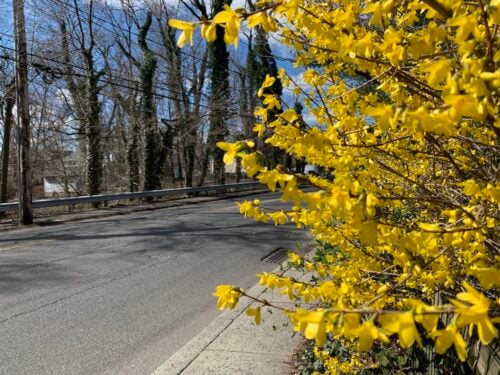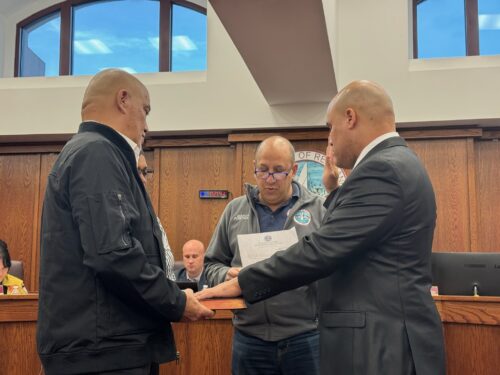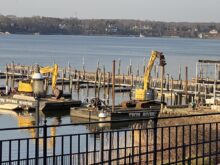
By SUE MORGAN
Piggybacking on the popularity of the dolphin pod that’s been in the Shrewsbury River since mid-June, Clean Ocean Action last week took aim at three proposals to create liquefied natural gas terminals off the Monmouth County coast.
With a private plane towing a “Help! Save the dolphins!” banner overhead, COA Executive Director Cindy Zipf and other speakers at the July 3 press conference on the Sea Bright boardwalk appealed to the public’s love of the frolicking marine mammals in an effort to sink the plans.
One proposal, by the Atlantic Sea Island Group, calls for a manmade island terminal to be built in the Atlantic Ocean 19 miles off east of Sea Bright for the ‘regasification’ of liquified natural gas. Two other companies have proposed similar operations off Asbury Park and Manasquan.
The proposals, as well as the unusual presence of some 15 to 20 Atlantic bottlenose dolphins swimming nearby, served as ammunition for Zipf and other speakers. COA, a consortium of about 125 organizations, claims construction of the island will “harass” some 1,000 dolphins and whales, and disrupt the lives of 700 such animals each year of operation.
Yes, the ocean and other waterways are cleaner than they were more than 25 years ago, when COA began its mission to end ocean dumping, Zipf acknowledged. However, until federal laws prohibiting the creation of LNG terminals and offshore drilling are on the books, some individual or corporation will always entertain the notion of industrializing the ocean for profits, she noted.
“People will always continue to find destructive things to do to the ocean,” she said.
Former Sea Bright councilman Andrew Mencinsky, executive director of the Surfers’ Environmental Alliance, agreed that the ocean near New Jersey is cleaner than it’s been in decades, and pointed to the dolphins’ presence as proof. Nonetheless, he said, threats to the water and the shore will persist until the nation stops relying on fossil fuels and looks at energy alternatives, such as solar, wind, and the tides.
“We need our government to not subsidize the oil companies,” Mencinsky said.
COA has previously called for the creation by Congress of a “Clean Ocean Zone” along the length of the Jersey shore to protect marine ecosystems.
Atlantic Sea Island Group’s proposal for its LNG terminal first became known about two years ago. After hearing from COA about the potential impact of the operation on the marine environment and local areas, Sea Bright became the first New Jersey municipality to oppose the construction of LNG terminals near the coastline, said Mayor Maria Fernandes.
A t-shirt bearing the words “Stop the insanity” on the front and an illustration of “Insanity Island” on the back is the centerpiece of a COA informatin drive known as Clean Ocean Action Shore Tips (COAST). The organic cotton shirt will be available for sale this summer at beaches, parks, and local festivals in Monmouth and Ocean counties with proceeds to benefit COA, said Casey Shanley, 2008 coordinator.
COAST is also coordinating a petition drive to gain the support of both Jersey Shore locals and visitors against two more proposed LNGs terminals. A floating terminal has been proposed by Excalibur Energy 16.8 miles off the Asbury Park beachfront, and a third has been suggested by Exxon/Mobil 20 miles off the coastline of Manasquan, according to COA representatives.






















